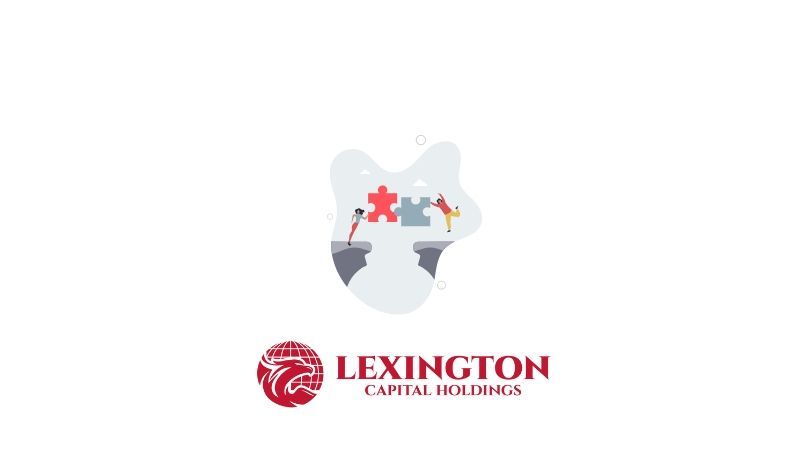Celebrating Together: How Holidays Can Strengthen Your Brand’s Relationship with Clients
Celebrating Together: How Holidays Can Strengthen Your Brand’s Relationship with Clients
Holidays are more than just calendar dates; they’re valuable opportunities for businesses to foster connections with clients, celebrate traditions, and showcase their products in unique, engaging ways. Whether it’s New Year’s, Independence Day, or even niche holidays, a thoughtful approach can create meaningful interactions and build loyalty. Here’s how businesses can make the most of any holiday and build memorable experiences for their clients and communities:
1. Create a Holiday-Themed Experience Across All Touchpoints
Bring the holiday spirit into every aspect of your business’s presentation. This could mean updating your website banner, adding themed visuals to your social media, or changing your in-store décor to reflect the season. Subtle touches like festive icons, seasonal greetings, and themed email templates can create an immersive holiday experience for clients. Whether virtual or physical, a holiday-inspired environment invites clients to feel part of the celebration.
2. Tailor Products or Services to the Holiday Theme
Highlight how your offerings connect to the holiday’s spirit. Consider creating limited-time versions of popular products or packaging them in holiday-themed bundles. For instance:
- A café could feature a specialty holiday drink menu, like peppermint coffee for the winter season or pumpkin flavors in autumn.
- Service-oriented businesses could introduce holiday-themed packages, such as discounted consultations or themed workshops tailored to the holiday.
Seasonal adjustments to products make clients feel like they’re getting something exclusive, encouraging repeat engagement year after year.
3. Engage Clients with Holiday-Related Content
Holiday-specific content can be a powerful way to connect. Try sharing relevant tips, creating holiday guides, or running themed social media campaigns. Here are some examples:
- A clothing brand might share styling tips for the holiday season.
- A financial services company could provide budget tips or advice for managing holiday expenses.
- Content doesn’t always need to be serious; fun posts like polls, quizzes, and client stories can create a joyful and personal atmosphere.
The goal is to educate, entertain, or inspire, positioning your business as a resource clients turn to during the holidays.
4. Offer Holiday-Exclusive Deals or Promotions
Holidays are a prime time for promotional offers, and clients appreciate exclusive discounts, bundles, or flash sales to commemorate the occasion. Tailor promotions that reflect the holiday's theme to create a sense of urgency and excitement:
For Valentine’s Day, consider a “two-for-one” deal, promoting items for couples or friends.
On Earth Day, an eco-friendly business might offer discounts on sustainable products, reinforcing brand values while celebrating the holiday.
Time-sensitive promotions also encourage clients to act, creating excitement around each holiday.
5. Show Appreciation with Client-Focused Holiday Campaigns
The holidays are a perfect time to recognize and reward client loyalty. Send out personalized messages, thank-you notes, or holiday cards that express genuine gratitude for their support. Going a step further, businesses can offer exclusive perks to loyal clients:
- An end-of-year “thank you” gift for long-term clients.
- A referral bonus for clients who bring in new business during the holiday season.
Small gestures like these remind clients that they’re valued, reinforcing positive relationships and encouraging brand loyalty.
6. Host Events or Giveaways that Build Community and Engagement
Hosting a holiday event or online giveaway can create a lively buzz around your brand. A virtual holiday event, such as a themed webinar or workshop, can help educate clients on a topic related to the holiday or season, such as financial planning tips for the New Year. In-store events can foster a festive community atmosphere and drive foot traffic.
Giveaways, on the other hand, are fantastic for building social media engagement. For example:
- A Halloween-themed giveaway could invite followers to post their costumes with a specific hashtag.
- A New Year’s event might encourage clients to share their resolutions for a chance to win a product.
Events and giveaways provide an excellent way to build rapport, engage your audience, and create positive memories associated with your brand.
7. Reflect the Holiday’s Core Values in Your Messaging
Every holiday carries a unique meaning, so align your message accordingly. For example:
- For Memorial Day, emphasize gratitude and honor.
- On Thanksgiving, focus on appreciation and giving back.
- During the winter holidays, center your message on unity, family, and celebration.
When businesses embody these values in their messaging, it resonates on a deeper level, creating genuine, memorable connections with clients.
8. Encourage Social Sharing to Amplify Reach
Make it easy and rewarding for clients to share their experiences with your holiday-themed products or events. Provide incentives, like a discount code or small gift for tagging your business in social posts. User-generated content is an effective and authentic way to spread holiday cheer, build brand awareness, and engage with clients on a personal level.
Embrace Holidays Year-Round for Lasting Impact
Each holiday, no matter how big or small, is a chance to make a meaningful impact on your clients. By creating a holiday-themed experience, tailoring products, offering exclusive deals, and staying engaged with clients, businesses can forge connections that last well beyond the season. Holidays offer not just a chance to celebrate, but also a way to show clients that they are part of the celebration—and part of your brand’s journey. Embrace the spirit of each holiday, and turn every season into an opportunity to strengthen relationships, boost engagement, and grow your brand.The body content of your post goes here. To edit this text, click on it and delete this default text and start typing your own or paste your own from a different source.

When you apply for business funding, your application goes through a critical stage—underwriting. This is where lenders evaluate risk and determine whether your business qualifies for financing, and under what terms. Understanding what underwriters look for can help you strengthen your application, avoid delays, and increase your approval odds.

Not every business enjoys a steady stream of income. For many companies—especially those in seasonal industries, contracting, or project-based work—revenue can shift dramatically from month to month. These ups and downs are normal, but they can make managing cash flow, payroll, and operating expenses challenging. At Lexington Capital Holdings, we understand that fluctuating revenue doesn’t mean instability—it just means you need the right financial tools to stay balanced and grow confidently.

The Challenge of Hyper-Growth For many startups, growth isn’t the problem—it’s managing it. Rapid scaling demands capital for hiring, marketing, technology, and operations. But too often, founders find themselves cash-strapped right when they need resources the most. Choosing the right financing strategy can be the difference between sustainable growth and burning out too soon.

When it comes to business financing, the terms you secure are just as important as the funding itself. Lower interest rates, flexible repayment schedules, and higher approval amounts can mean the difference between simply surviving and setting your business up to thrive. The good news? Business owners often have more negotiating power than they realize. At Lexington Capital Holdings, we’ve seen firsthand how preparation and strategy can help secure stronger terms. Here’s how you can do the same:

For many businesses, waiting on customer payments can feel like standing still when you’re ready to move forward. Delayed invoices, extended payment terms, or slow collections create cash flow gaps that make it harder to cover expenses, pay employees, or seize new opportunities. The truth is—even successful, profitable companies face this challenge. The key isn’t avoiding it, but managing it strategically with the right funding solutions

Securing business funding is a milestone—but the real impact comes from how you put that capital to work. Every dollar borrowed should fuel momentum, strengthen operations, and generate measurable returns. Unfortunately, too many businesses stop at “getting approved” and miss the chance to maximize their return on investment (ROI). At Lexington Capital Holdings, we believe funding isn’t just about access to capital—it’s about creating opportunity. Here’s how to ensure your financing delivers the highest ROI:

In today’s fast-paced business environment, standing out from the competition requires more than just great products and services—it takes strategy, timing, and smart financial decisions. One of the most overlooked tools in building and maintaining a competitive advantage is business financing. When leveraged correctly, financing doesn’t just help you “get by”; it can actually position your business to outpace competitors and capture new opportunities.

In business, surprises aren’t a matter of if—they’re a matter of when. Whether it’s a sudden equipment breakdown, an unexpected dip in sales, or a market shift that requires quick adaptation, unforeseen expenses can test even the most successful companies. The difference between thriving and struggling often comes down to how well you’ve prepared.

When most business owners hear the word debt, it sparks feelings of stress or risk. But here’s the truth—debt isn’t always a bad thing. In fact, when managed strategically, debt can become one of the most powerful tools to grow, stabilize, and scale your business. At Lexington Capital Holdings, we work with business owners every day who are navigating this very question: Is taking on debt the right move for me? Let’s break down the difference between “good” and “bad” debt so you can make informed financial decisions.

In today’s business world, financing options are everywhere—but choosing the right path can feel overwhelming. From traditional bank loans to alternative lending solutions, the fine print and fast-changing requirements often leave business owners spending more time deciphering funding terms than actually running their businesses. That’s where the value of a dedicated funding advisor truly shines. At Lexington Capital Holdings, we’ve seen firsthand how personalized guidance can transform the funding experience for business owners of all sizes.

